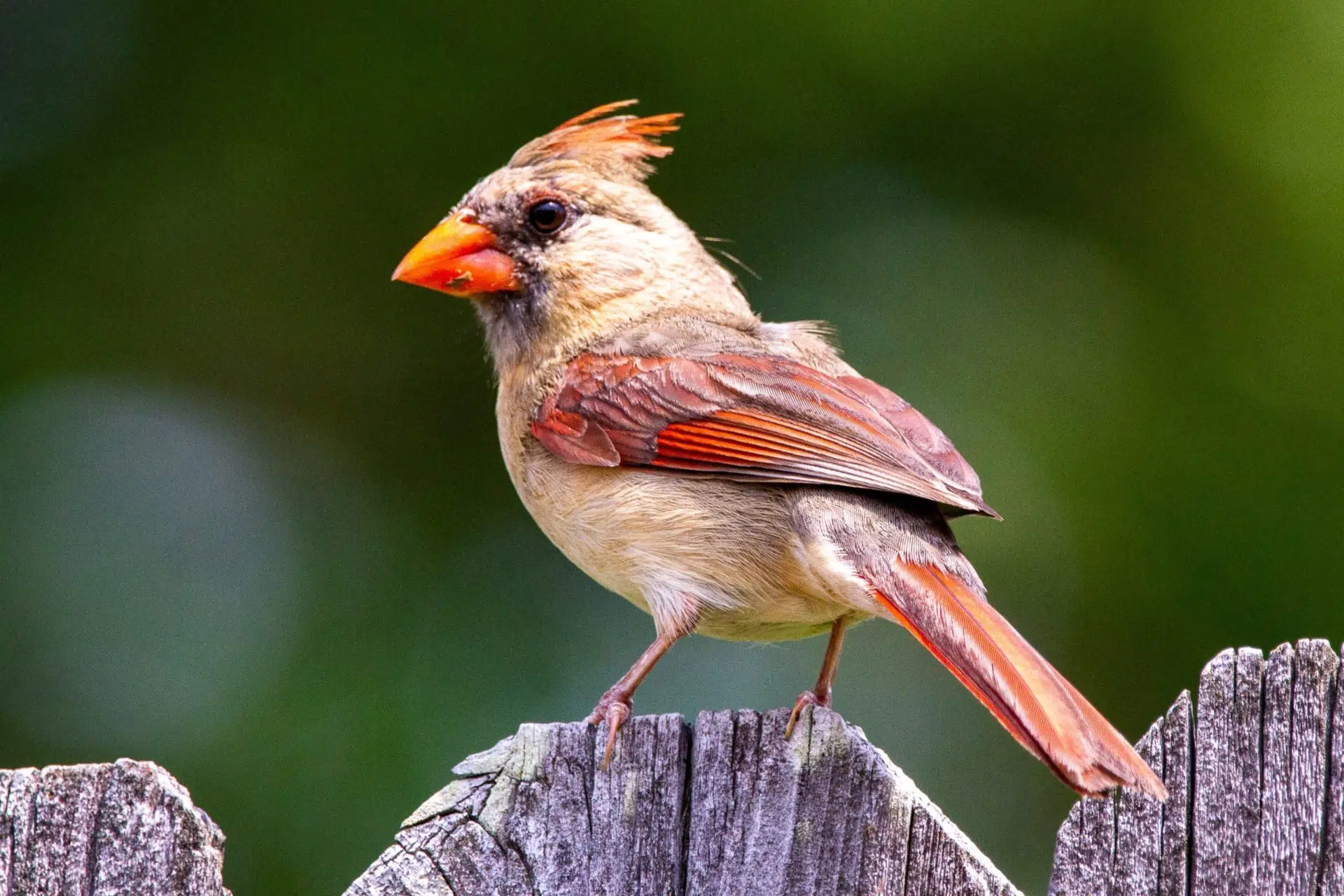Birds
Northern Cardinal
Cardinalis cardinalis


Voice: Repetition of short whistled phrases with some notes run together; sounds like birdy, birdy, birdy.
Northern cardinals are probably the most easily recognized birds in Northeastern United States. They do no migrate or change color so they can be seen all year round. They prefer wetland, forest, and shrub ecosystems, though they can live in former forests and urban areas. Unlike most songbirds both males and females sing. Males may sing throughout the year while females may be heard primarily during nesting season.
Northern cardinals hop, not walk, on the ground foraging for seeds and fruits. Their thick, cone-shaped beak is well adapted to cracking many different kinds of seeds including buckwheat, grasses, sedges, sumac, tulip-tree, and corn. Cardinals eat many kinds of feeder seed including safflower and black oil sunflower seed. They also supplement their diet and feed their nestlings invertebrates including beetles, crickets, katydids, leafhoppers, cicadas, flies, centipedes, spiders, butterflies, and moths. During foraging, young birds often allow adults to feed first and females tend to allow males to feed before them. Cardinals sometimes forage with other species, including dark-eyed juncos, white-throated sparrows, tufted titmice, goldfinches and other sparrow species.
Northern cardinals are monogamous. However they often choose a different mate each breeding season. Once a pair is established male cardinals vehemently defend their territory from other males during. Both males and females can even be seen fighting their own reflection on windows, mirrors or metal object for hours defending their territory.
Nest building begins in April. Northern Cardinals build their nest less than eight feet off the ground in a fork of small branches in a sapling, shrub, or vine tangle. They generally use their nests only once. Females construct the nest of thin twigs, grasses, strips of bark, vines and rootlets in 3-9 days. Males may bring nesting material to the females.
Northern cardinals usually have two sets of young each year. Female northern cardinals lay three or four pale green, speckled brown eggs. Females do most of the incubating typically after the third egg is laid. Males bring food to the females throughout incubation. Eggs hatch in about 12 days. Once the young cardinals have hatched males tend to them while the females begin building a new nest. Immature cardinals look more like females than males. They leave the nest 9-11 days and become independent at 38-45 days.
Populations of northern cardinal are stable or slightly declining. Cardinals generally expanded their range northward in the 20th century due to the growth of towns and suburbs across eastern North America. However habitat loss at the edge of the cardinal’s range may have cause the disappearance of local northern cardinal populations.
Best Location to View: Blueberry Pond, Buckeye Bud Bird Feeding Station, Buttonbush Bog, Thayer feeders
Color: Males: bright red body and head, with an orange red bill and black face around the bill. Females: Pale brown gray body with reddish tinges in the wings, tail, and crest and black face and red-orange bill.
Range: Eastern United States down south through Mexico and Central America.
Size: 8-9"
Wingspan: 9-12"




